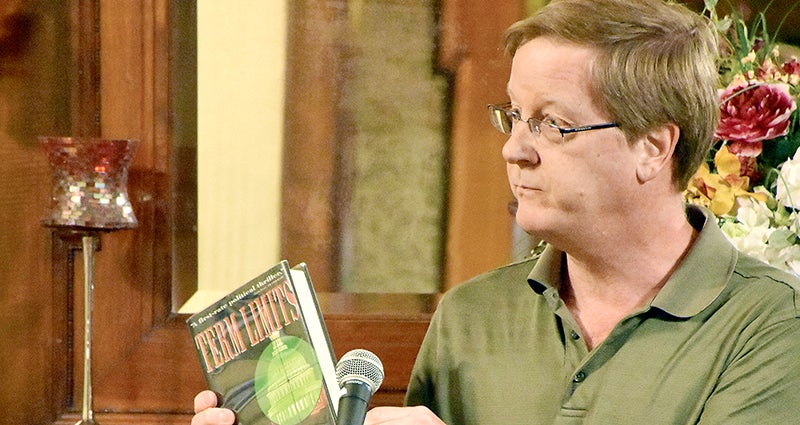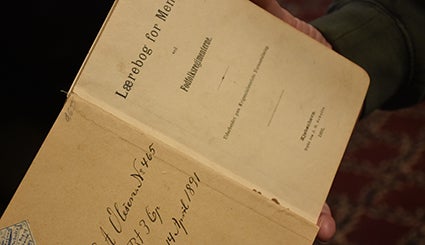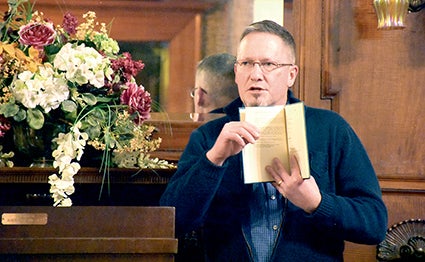The love of books; Bookseller opens chapter on rare finds
Published 10:42 am Tuesday, February 14, 2017

- Book dealer Jay Nelson displays a copy of "Term Limits" by Vince Flynn, a Minnesota author. Photos by Deb Nicklay/deb.nicklay@austindailyherald.com
Jay Nelson, if he could fulfill a dream, would be to come across Edgar Allen Poe’s first book, “Tamerlane and Other Poems,” hiding on a dusty shelf somewhere.
“I think there are only 10 or so known to exist,” said Nelson, who spoke to a crowd of about 30 at the Hormel Historic Home Monday, part of the home’s monthly “History Happy Hour.”
“And,” he added, “it is worth about $600,000.”
Nelson, who is an Austin antique book dealer, spoke about the rare book culture along with John Haymond, executive director of the Mower County Historical Society.
Nelson and Haymond spoke about their experiences with buying or collecting rare volumes, and all those things that go into knowing a book’s value.

One woman brought a “Manual for a Danish Soldier,” that belonged to her grandfather.
Condition, whether or not it has a book jacket, first edition status and the rarity of volumes all contribute to its value, said Nelson.
First editions of authors such as John Steinbeck, Ernest Hemingway and William Faulkner continue to hold their value.
Nelson said size and age aren’t necessarily indicators of value; he said that he had an expensive 1970s Bible, for instance — and valuable because artist Salvatore Dali had illustrated the book.
He rarely purchases best sellers — with the exception of one of his most prized purchases: A signed copy of “To Kill a Mockingbird” by Harper Lee, that has an estimated worth of $10,000.
Mistakes in printing can also lead to a more valuable book, such as the first U.K. edition of “Harry Potter and the Philosopher’s Stone” (in the U.S., to be called “Harry Potter and the Sorcerer’s Stone”) that carried the name “Joanne Rowling” instead of what she preferred, “J.K. Rowling.” The subsequent editions carried the correct name, but made the earlier versions worth in the thousands of dollars today.
Archive items — diaries, letters — are becoming more sought by collectors, Nelson said.

Mower County Historical Society Executive Director John Haymond discusses his love of military history and poetry books during a presentation at the Hormel Historic Home on Monday.
There are trends in collecting, Nelson said, adding that mysteries, popular to collectors in the 1990s, have cooled a bit.
Haymond urged anyone who is interested in collecting books to follow a genre or theme, and to not be in any hurry to remove marks and margin notes. He recalled the true story of a man who had a book about the French politician Robespierre. The new owner noticed margin notes throughout the book and worked steadily to erase the notes from the pages. He finally made his way to the back of the volume — and realized the man who made the notes was author Victor Hugo.
Haymond said his most sought-after book would be Mary Wollstencraft’s “A Vindication of the Rights of Women,” written in 1792, making it one of the earliest treatises on women’s rights.





